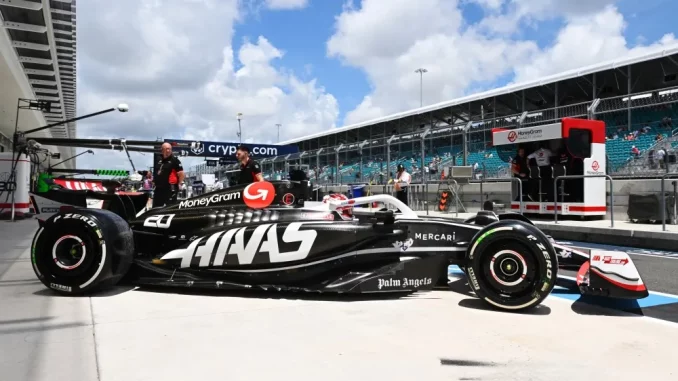

In January, Haas Formula 1 seemed to be in turmoil. The unexpected departure of team principal Guenther Steiner and technical director Simone Resta just before the new season signaled a significant shake-up. With the season fast approaching, Haas faced a major overhaul in both management and the technical department, which manages their Ferrari partnership and Dallara manufacturing.
Ayao Komatsu, Steiner’s successor, set modest expectations for the team, predicting they would likely be at the back of the grid in Bahrain. “Out of the gates in Bahrain, I still think we’re going to be towards the back of the grid, if not last,” Komatsu said, reflecting the team’s recent struggles with tire wear and race pace that had often led to disappointing finishes despite promising qualifying performances.
Komatsu also highlighted Andrea De Zordo, Haas’s new technical director, as a key figure in their revival. “Our new technical director is Andrea De Zordo,” Komatsu noted. “He was the chief designer previously and is a very technical person. His communication is good, he’s very engaged and he listens to people, so I’m very happy about that appointment.”
De Zordo, who had previously worked with Resta and was familiar with the challenges from Haas’s major upgrade at Circuit of The Americas last year, faced a significant challenge. Despite the team finishing at the bottom of the constructors’ championship, the only direction was up.
De Zordo acknowledges the difficulties of his new role. “It was a fresh start with many changes — the organization, the working methods — and it was all happening at once,” he tells RACER. “It was a demanding time, but I had a good relationship with Ayao before, and we work together quite well now.”
The transition to technical director brought its own set of challenges, but De Zordo is adapting and working hard to drive Haas forward in the new season.

The first month was particularly intense, filled with pressure and self-doubt. “You wake up each day hoping you can meet the expectations. Over time, though, you start to feel more comfortable and confident,” he says. “I like the role now, though it’s still very challenging.”
While much credit goes to Resta and the technical team for their efforts before De Zordo’s promotion, his impact is evident. The introduction of a new upgrade package significantly improved performance at the British Grand Prix, marking Haas’s second consecutive top-six finish. De Zordo notes, “We’ve managed to be faster in races than in qualifying, which is satisfying and indicates we’re on the right track.”
De Zordo highlights that last year’s struggles were crucial for identifying the right development direction. “We did a lot of work over the winter to address key areas of improvement, and it’s paying off. It’s not just about hardware or drivers; our approach has also evolved. We’re more aware of what’s needed to advance.”
He emphasizes that the focus is on both major upgrades and small details. “In this regulation era, the floor is crucial, but we’re also attentive to other aspects of the car,” he explains. “Even minor details matter and can impact performance.”
Looking ahead, De Zordo is aware that the competitive landscape could change rapidly. “We must continue to improve,” he asserts. “There are teams underperforming, and to stay competitive, we need to enhance our resources and development. Our goal is to be at the top of the midfield, and we know that requires further progress.”
 The tightening competition in F1’s midfield has been advantageous for Haas, but De Zordo recognizes that maintaining their upward trajectory will require ongoing effort. With the 2026 regulations on the horizon, which present new opportunities, De Zordo is focused on leveraging Haas’s history of strong performances at the start of new rule cycles.
The tightening competition in F1’s midfield has been advantageous for Haas, but De Zordo recognizes that maintaining their upward trajectory will require ongoing effort. With the 2026 regulations on the horizon, which present new opportunities, De Zordo is focused on leveraging Haas’s history of strong performances at the start of new rule cycles.
De Zordo reflects, “We’ve consistently done well at the start of new regulations, and the best results over the past three years have been in the first race of those new cycles. However, I’m not relying solely on this trend. It’s a challenging task, especially for a team like ours with limited resources.”
As Haas prepares for the upcoming changes, understanding the new regulations and exploring their possibilities is crucial. De Zordo notes that while the current regulations are working well, other teams have outperformed Haas, largely due to their initial strategic choices and continuous development.
He adds, “Red Bull’s success is partly due to their ability to choose the right path from the start and stick with it. Other teams have had to pivot and recover, which affects their performance.”
De Zordo believes that even if Haas isn’t fully prepared for the first race under the new regulations, starting on the right path is essential for future success. Based on the trajectory of 2024, there’s optimism that De Zordo can lead Haas effectively in the coming years.
GET MORE NEWS HERE
Leave a Reply